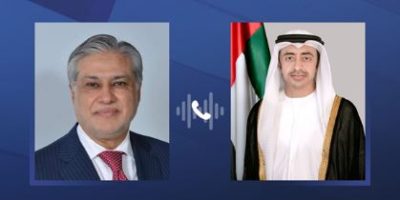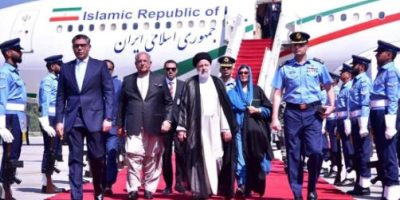Pak needs 6-7% annual economic growth to reduce poverty, unemployment

KARACHI, JAN 15 (DNA) – The Federation of Pakistan Chambers of Commerce and Industry (FPCCI) ex-president and Businessmen Panel Chairman Mian Anjum Nisar has expressed the hope that the positive growth in large-scale manufacturing (LSM) will help achieve the annual economic growth target, besides creating jobs if the trend continues in coming months.
Mian Anjum Nisar was addressing a meeting held to discuss the trade and industry’s problems and their solutions. The meeting was also attended by the Businessmen Panel leadership, including FPCCI President Nasir Hayat Magun, FPCCI senior vice president Shahzeb Akram, PIAF Chairman Mian Nauman Kabir and LCCI former president Irfan Iqbal Sheikh. The BMP leadership in the meeting pledged to continue its efforts for the cause of the business community through the FPCCI platform.
Mian Anjum Nisar observed that the output of Pakistan’s large industries increased 7.4% in the first five months of current fiscal year on the back of a sustained growth momentum for the third successive month, which is a ray of hope for economic revival.
The FPCCI’s ruling group chairman said that the Large-Scale Manufacturing sector registered a cumulative growth of 7.4% in July-Nov of current fiscal year, but industry has not yet achieved the production levels seen before the first wave of the coronavirus hit the country in late Feb last year.
He said that industrial production after suffering months of damage inflicted by the corona pandemic mainly in the construction, sugar, automobile, and pharmaceutical sectors is now clearly reflecting a revival in economic activities in the country.
For the current fiscal year, the government had set the economic growth target at 2.1 percent, which will be better in the current economic situation but is not enough to create jobs for a growing population.
Out of 15 major sectors, 10 sectors recorded positive growth while output of five sectors contracted in the first five months of current fiscal year. The LSM sector recorded a 14.5% year-on-year growth in Nov, which is the highest LSM growth but it is also the fact the index was still below the level of 160 points recorded in March last year, as the index jumped to still 147 in Nov 2020.
Mian Anjum Nisar said that decrease in interest rates and reduction in duties on raw materials is expected to further spur economic activities in the current fiscal year. He said that the growth has now broken a cycle of constant contraction in past over one year.
He said that large businesses had been bearing the brunt of very high interest rate, issues of the Federal Board of Revenue and high energy prices. The annualized LSM growth may slow down in December 2020 due to a high base effect.
The sectors which registered a dip in their production included iron and steel whose production fell 3.7%, electronics 18%, leather products 43%, engineering products 32.6% and wood products 65% during the July-November period. He said that the World Bank released a new report, which showed a gloomy picture of Pakistan’s economy. On a month-on-month basis, the LSM sector showed only 1.4% growth in November over Oct 2020. Data collected by the Oil Companies Advisory Committee (OCAC) showed that 11 types of industries registered average growth of just 0.09% in the first five months of current fiscal year. He said that Pakistan needs 6-7% annual economic growth to reduce poverty and unemployment.
FPCCI former president said that the industrial sector has a major contribution to the tax collection and the sector’s share in revenues is almost triple than its contribution to the overall economic output.
Mian Anjum Nisar called for out-of-the-box solutions for economic growth, as COVID-19 has adversely impacted the world’s economy as well as Pakistan’s trade and industrial sectors.
He said the government has already missed its annual export target for the first two years. For the current fiscal year, the export target was reset at $27.7 billion, requiring at least 6 percent growth.
He said the government has to formulate long-term and consistent policies for the revival of industry and considerable improvement in exports, as contrary to regional countries, Pakistan’s exports have remained stagnant for a long time, and unless attention was paid to all factors that hamper industrial and exports growth, the country might not be able to achieve desired results.=DNA
============
Related News

Dar extends sympathy to UAE over torrential rains devastation
ISLAMABAD, APR 24: /DNA/ – Foreign Minister of Pakistan, Ishaq Dar held telephone conversation withRead More

PTI blasts FO for silence over US warning of imposing sanctions for doing business with Iran
Govt should issue befitting, solid response to US administration threatening statement ISLAMABAD: /DNA/ – PakistanRead More


Comments are Closed